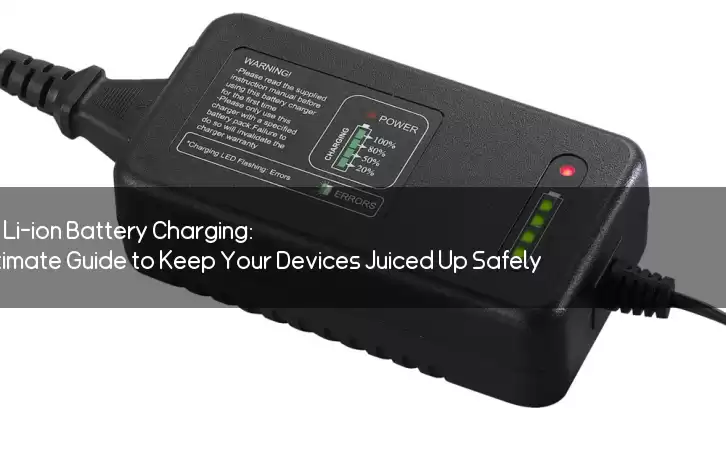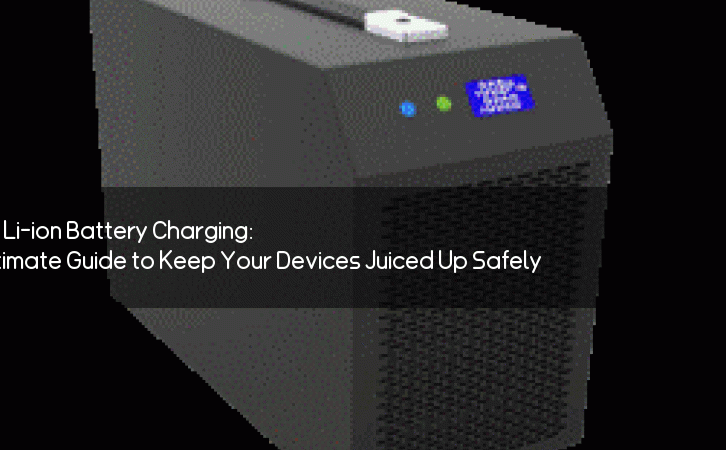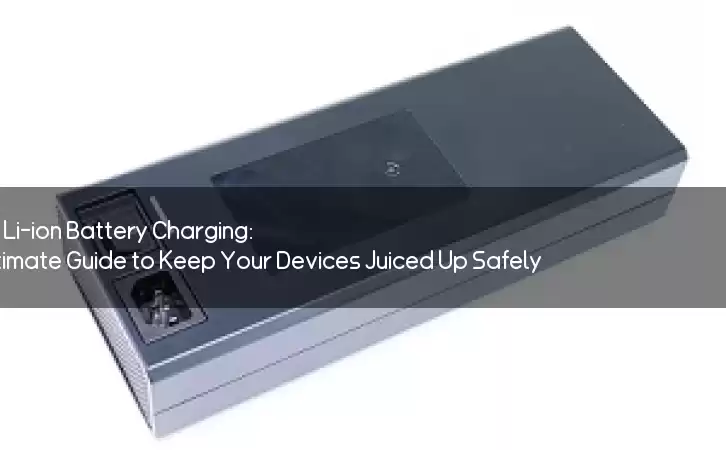Information Center
Mastering Li-ion Battery Charging: The Ultimate Guide to Keep Your Devices Juiced Up Safely
Published:2023-04-19 19:33:31 Author:Green WCND Views:79Li-ion Battery Charger Instructions: A Comprehensive Guide

Li-ion batteries have become increasingly popular with the rise of portable electronic devices. From smartphones to laptops, these batteries are powering our devices on the go. However, they eventually run out of charge and need to be recharged. This is where a li-ion battery charger comes in. In this article, we will provide a comprehensive guide on how to use a li-ion battery charger effectively.

Understanding Li-ion Batteries

Before we get into using a li-ion battery charger, it’s important to understand the battery itself. Li-ion batteries work by allowing Lithium ions to move from the negative electrode to the positive electrode during discharge, and the reverse during charging. They are lightweight and compact, making them perfect for portable devices. However, they do require special attention during charging to avoid any potential problems.
Choosing the Right Charger
When it comes to li-ion battery chargers, there are many options available in the market. It’s important to choose a charger that’s compatible with your battery. The charger should also be able to handle the voltage and current ratings of the battery. If you use the wrong charger, you risk damaging the battery or the device itself.
The Charging Process
1. Preparing the Battery: Before charging the battery, make sure it’s cool to the touch. Avoid charging a battery that’s hot, as this can damage the cells. Also, avoid charging a damaged or swollen battery as it can be dangerous.
2. Connecting the Charger: Connect the charger to the battery carefully, making sure that the polarity is correct. Most chargers have a positive and negative terminal, which should correspond with the battery.
3. Starting the Charging Process: Once the charger is connected, turn it on. Your charger may have an indicator light that tells you when it’s charging. Once the charger is connected, avoid disconnecting it until the charging process is complete.
4. Monitoring the Charging Process: While the battery is charging, monitor the charger regularly. If the charger gets too hot or makes any strange noises, stop the charging process immediately. Some chargers have a safety feature that automatically cuts off the charge when the battery is full, so make sure to check this too.
5. Ending the Charging Process: Once the battery is fully charged, disconnect the charger carefully. Do not overcharge the battery, as this can cause damage to the cells. It’s recommended to remove the battery from the charger and the device after it’s fully charged.
Safety Precautions
Li-ion batteries are generally safe when handled properly, but they can be dangerous if mishandled. Here are some safety precautions to keep in mind:
- Never charge a damaged or swollen battery - Avoid exposing the battery to extreme temperatures - Keep the charger and battery away from water - Always use the right charger for your battery - Avoid overcharging the battery
Conclusion
Li-ion battery chargers are essential for keeping our portable devices powered up. By following these instructions, you can avoid damaging the battery or device and ensure a safe and effective charging process. Remember to always use the right charger, monitor the charging process, and follow safety precautions for a seamless charging experience.
Power Adapter Design and Customization Guide for Portable Electric KettlesI. Common Design Types for Portable Electric Kettle Power AdaptersPortable electric ke···
I. Common Design Types of Power Adapters External Independent Type (Most Common) Design: A standalone adapter (e.g., "black brick") connected to the p···
Handheld Vacuum Cleaner Power Adapter Selection GuideIntroductionHandheld vacuum cleaners have become a mainstream tool for household cleaning due to their port···
Drill Power Adapter Selection Guide.drill-container { font-family: Arial, sans-serif; line-height: 1.6; max-width: 800px; margin: 0 auto; padding: 20px; } .dril···





